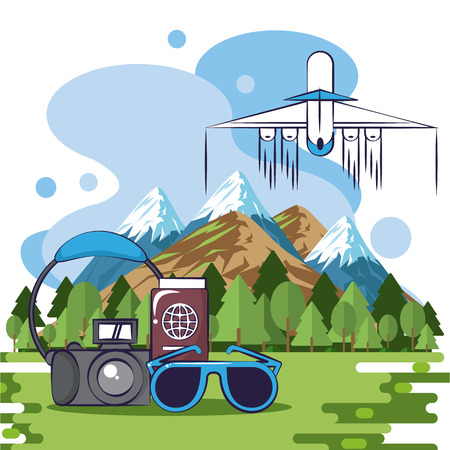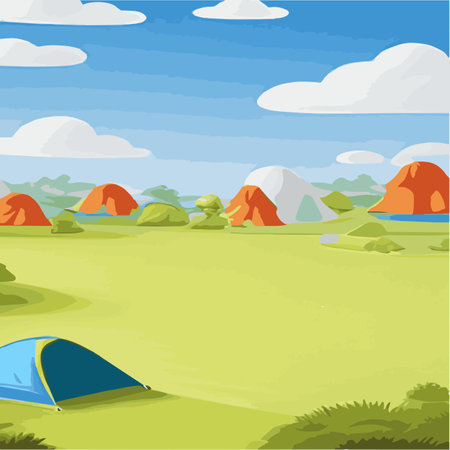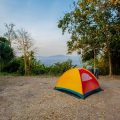1. Choosing the Perfect Riverside & Lakeside Spot in India
India is a treasure trove for campers seeking the serenity of riversides and lakeshores. From the mystical Ganges in Rishikesh to the tranquil backwaters of Kerala, and from the untamed Brahmaputra in Assam to the pristine lakes of Uttarakhand and Himachal Pradesh, the options are endless. While planning your adventure, it’s crucial to balance natural beauty with local customs and state-specific camping regulations. Many popular destinations like Pangong Lake in Ladakh or Bhimtal in Uttarakhand offer well-established camping grounds that follow eco-friendly practices and respect local traditions—such as refraining from loud music or alcohol consumption near sacred water bodies. For those who prefer offbeat experiences, spots along the Godavari in Maharashtra or the emerald Chilika Lake in Odisha promise raw, untouched beauty but may require extra permits and awareness of community boundaries. Always check with local authorities or forest departments regarding permissions, especially in protected zones or tribal regions. Embrace the diversity of Indian geography—from lush Western Ghats to sun-kissed eastern deltas—and remember, every river and lake holds a unique story shaped by regional culture and nature’s grandeur.
2. Understanding Indian Seasonal Weather Patterns
India’s diverse geography means that camping by rivers and lakes is an ever-changing adventure, with each season bringing its own set of challenges and charms. Let’s break down how monsoon, summer, and winter conditions shape your camping experience across different Indian states—and which tools and local wisdom can help you stay ahead of the weather.
Seasonal Impact on River & Lake Camping
| Season | Key Regions | Weather Challenges | Camping Tips |
|---|---|---|---|
| Monsoon (June–Sept) |
Kerala, Karnataka, West Bengal, Assam, Maharashtra | Heavy rains, sudden water level rise, slippery banks, flash floods | Avoid low-lying sites, pitch tents on higher ground, check IMD alerts daily, pack waterproof gear |
| Summer (March–May) |
Rajasthan, Gujarat, Madhya Pradesh, Telangana | Scorching heat, risk of dehydration, reduced water flow in rivers | Campsite near shaded groves, hydrate frequently with ORS packs, start activities at dawn or dusk to beat heat |
| Winter (Nov–Feb) |
Himachal Pradesh, Uttarakhand, Jammu & Kashmir, North-East Hills | Freezing nights, foggy mornings, icy water bodies | Double-layered sleeping bags, insulated tents, track local forecast for cold wave warnings |
Region-Specific Forecasting Tools & Local Wisdom
- Indian Meteorological Department (IMD): The IMD app and website offer hyper-local rain and temperature forecasts—essential for real-time updates before heading out.
- Mausam App: This government-backed mobile app gives detailed state-wise weather alerts.
- Panchayat Notices & Local Radio: In remote villages along riverbanks (like those in Uttarakhand or Kerala), always check with the local panchayat office or tune into All India Radio for traditional advisories about rising water levels or early morning fogs.
- Bhoomi Satellite Data: Particularly useful for campers in Maharashtra and Karnataka during monsoons—track rainfall patterns affecting river catchments upstream.
The Value of Local Advice: “Desi Jugaad” Tips
If the elders in a Himachali village say “Don’t camp too close to the river after dusk,” listen up—it often means upstream snowmelt or dam releases are expected. Likewise, fishermen in Bengal know when high tides make lakes unsafe for tents. Blend modern forecasts with these on-ground insights for true wild wisdom.

3. Essential Gear & Packing Must-Haves for Indian Terrains
When planning a riverside or lakeside camping trip in India, your packing list must be as diverse as the subcontinent’s landscapes. From the lush banks of Kerala to the rugged shores of Ladakh, every region demands a unique approach—so let’s run through an essential checklist filled with desi hacks and locally sourced gear to keep you comfortable and safe.
Packing Checklist: Desi Edition
Mosquito Nets & Repellents
Indian riverbanks and lakesides are notorious for their buzzing mosquito armies, especially after dusk. Always pack a sturdy mosquito net (machhardani) and stock up on local repellents like Odomos cream or neem-based sprays. These simple additions ensure undisturbed sleep, whether you’re camping by the Ganges or in the Sundarbans.
Tandoor-Based Cooking Essentials
Nothing beats the smoky flavors of food cooked over a traditional tandoor or chulha. For those who crave authentic Indian campfire meals, pack a compact tandoor grill or even a small handi. Don’t forget spices—carry masala dabba (spice box), ready-to-cook rotis, and dry lentils for quick dal tadka by the riverside.
Water Filtration Solutions
While India’s rivers are scenic, their water is often not fit for direct consumption. Equip yourself with portable water filters or locally available copper water bottles (known for natural purification). For remote regions, iodine tablets or boiling kits offer extra peace of mind.
Regional Fabrics & Weather-Ready Clothing
Dressing right makes all the difference. In humid areas, lightweight cotton kurta-pajamas or lungis keep you cool; in colder terrains like Uttarakhand, go for woolen shawls and hand-knitted sweaters from local bazaars. Rainy season? Pack a plastic raincoat (chatai-style) and quick-dry gamchas to wipe off after an unexpected downpour.
Pro Tip:
Always carry a desi jhola or backpack made from tough canvas—it withstands rough travel and doubles up as a picnic mat on sandy banks.
Last-Minute Add-ons
- Sunscreen suited for Indian skin tones
- Reusable steel tumblers and plates (eco-friendly & durable)
- A torch/lantern with extra batteries (power cuts are common near remote waters)
- A first-aid kit packed with Ayurvedic balms and pain relief oils
With this homegrown checklist, your Indian river and lake camping adventure will be both thrilling and hassle-free—blending modern practicality with timeless local wisdom.
4. Local Safety & Environmental Etiquette
When camping by Indian rivers and lakes, respecting local culture and the environment is crucial for a memorable and responsible outdoor experience. India’s waterways are often closely linked to nearby villages, wildlife habitats, and local traditions. Here’s how you can camp responsibly and harmoniously.
Respecting Nearby Villages
Many riverside or lakeside campsites are close to rural settlements. Always seek permission before setting up your camp near village lands or using communal resources like wells or firewood. Engage with villagers respectfully—greetings such as “Namaste” go a long way in building rapport. Avoid loud music or activities that could disturb the early morning routines or evening prayers common in these communities.
Wildlife Awareness: Monkeys, Elephants & More
Indian wilderness is home to diverse wildlife. Monkeys, elephants, wild boars, and even snakes might be your unexpected neighbors during a night under the stars. Be vigilant—never leave food unattended, as monkeys are notorious for raiding campsites, especially near forested ghats or temple towns. In areas known for elephants (like Kerala’s Periyar or Karnataka’s Kabini), avoid camping on animal trails and store food securely out of reach.
| Wildlife Encountered | Dos | Donts |
|---|---|---|
| Monkeys | Store food in sealed containers Keep campsite clean Observe from a distance |
Feed them Approach with food in hand Leave trash uncovered |
| Elephants | Set up camp away from known trails Listen for local advice Move quietly at dusk/dawn |
Block paths Try to photograph up close Leave scented items outside tent |
Swachh Bharat: Keeping Waterways Pristine
The Swachh Bharat (Clean India) Mission inspires campers to keep riverbanks and lakesides spotless. Always carry garbage bags; pack out all waste including biodegradable matter since it can harm sensitive aquatic ecosystems. Use only eco-friendly soaps at least 50 meters away from water sources for washing utensils or bathing. Never dispose of plastic or chemical-laden products into water bodies.
Quick Swachh Bharat Checklist for Campers:
- Carry back all non-biodegradable waste.
- Bury organic waste at least 15 cm deep, away from water.
- Avoid single-use plastics—opt for steel bottles and plates.
- Participate in local clean-up drives if possible.
- Respect posted signs regarding wildlife and conservation zones.
A Harmonious Camping Experience
Campsites along India’s rivers and lakes are not just scenic—they are living landscapes intertwined with culture and ecology. By following these safety tips and environmental practices, you ensure both your adventure and the beauty of India’s waterways endure for generations of explorers to come.
5. Cultural Touches to Enrich Your Camping Experience
When camping by India’s enchanting rivers and lakes, embracing local traditions is the secret ingredient that transforms your outdoor adventure from memorable to truly magical. Here’s how you can blend in with the local culture and make your camping trip an authentic Indian experience.
Set Up a Chai Corner
No Indian campfire is complete without the aroma of freshly brewed chai wafting through the air. Setting up a small chai corner at your campsite not only keeps you warm but also invites opportunities for conversation with fellow campers and curious locals. Bring along a sturdy kettle, tea leaves, cardamom, ginger, and sugar. As you brew, don’t be surprised if villagers or fishermen wander over for a cup—sharing chai is an instant icebreaker in India!
Participate in Evening Aarti by the Riverside
If you’re near sacred rivers like the Ganga or Narmada, join the evening aarti—a mesmerizing ritual of lamps, chants, and devotion that bathes the riverside in golden light. Even if you’re just a visitor, locals welcome respectful participation. Stand quietly with folded hands or offer a diya (oil lamp) to the river. This age-old tradition connects you with India’s spiritual heartbeat and lends deep serenity to your night under the stars.
Connect With Local Fishermen
Strike up a conversation with fishermen casting their nets at dawn or dusk. Many are happy to share stories about river legends, wildlife sightings, or weather wisdom passed down through generations. With permission, try your hand at traditional fishing methods—using bamboo poles or simple nets—and learn firsthand about sustainable practices that have nourished riverside communities for centuries.
Sample Regional Foods
Don’t stick to packed snacks when riverside villages offer delicious local fare! Ask about seasonal fish curries in Bengal, river prawns in Kerala, or spicy litti-chokha along the banks of Bihar’s Sone River. You might be invited to taste homemade pickles, rotis hot off village stoves, or even fresh-caught fish grilled over open fires. Eating locally supports rural economies and adds flavourful memories to your adventure.
Tip:
Always approach these experiences with humility and respect—dress modestly, ask before joining rituals or snapping photos, and thank your hosts warmly in Hindi (Shukriya) or the regional language. These cultural touches will enrich your journey as much as any scenic view or thrilling trek!
6. Emergency Preparedness and Health Precautions
Stay One Step Ahead: Essential Safety for Indian River & Lake Camping
Venturing into the wild heart of India—whether you’re pitching your tent along the swirling Ganges, tranquil Narmada, or remote lakes in the Western Ghats—demands more than just a spirit of adventure. The Indian landscape is as unpredictable as it is enchanting, and every seasoned camper knows that safety and health are paramount. Here’s your guide to navigating India-specific challenges and keeping your expedition smooth and secure.
Leeches: The Unseen Camp Companions
Monsoon-fed rivers and lush lakesides make perfect habitats for leeches, especially in the Nilgiris, Sikkim, or Kerala. Carry salt sachets or tobacco leaves in your kit; sprinkle them on leeches if they latch on. Wear high-ankle boots and tuck your pants in while trekking. Local tip: Many Indian trekkers swear by applying neem oil or mustard oil as a natural repellent!
Water Snakes: Respecting the Slithering Locals
India’s rivers and lakes are home to both non-venomous and venomous water snakes. Always check before stepping into shallow waters or reaching into undergrowth near water bodies. Use a sturdy walking stick to probe ahead while hiking around marshy banks, especially at dusk when snakes are most active. If bitten, don’t try local remedies—head straight to the nearest government health centre for anti-venom treatment.
Tropical Diseases: Don’t Let Bugs Spoil the Adventure
The humid environment around Indian waterbodies can be breeding grounds for mosquitoes carrying malaria or dengue. Pack Odomos (a popular Indian mosquito repellent), use mosquito nets at night, and wear long-sleeved clothing after sunset. Keep basic medicines for fever and upset stomachs handy—Indian pharmacies usually stock familiar brands like Crocin (paracetamol) or ORS sachets for dehydration.
Quick Access to Medical Help: Know Before You Go
Before heading out, identify the nearest government health centres (PHCs) or reputed pharmacies—Google Maps is a camper’s best friend here! In remote locations like Ladakh or the Sundarbans, locals can direct you to the closest ‘primary health centre’ (often called PHC or सरकारी अस्पताल). For urgent needs, Apollo Pharmacy and MedPlus have widespread chains across urban India.
Local Wisdom: Prepare Like a Desi Pro
Carry an emergency whistle, a charged power bank for mobile connectivity, and keep an updated list of local emergency numbers (like 112 for all-India emergency services). Share your camping location with friends via WhatsApp live location—a common practice among Indian trekkers. Finally, trust your instincts but don’t hesitate to seek help from villagers—they’re often your best allies in emergencies.
With these India-specific tips in your adventure toolkit, you’ll not only brave the elements but also savour the untamed beauty of Indian rivers and lakes like a true explorer. Stay alert, stay prepared, and let every journey add tales of courage to your camping diary!


